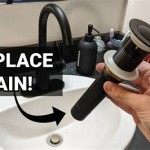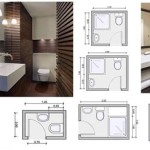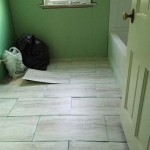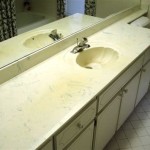Venting Bathroom Fan Through Gable Wall
Venting a bathroom exhaust fan directly through a gable wall offers a straightforward and often cost-effective solution compared to routing through the roof. This method eliminates the need for complex roof penetrations, reducing the risk of leaks and simplifying installation. However, proper planning and execution are crucial for maximizing efficiency and preventing moisture-related problems.
Choosing the Right Vent and Location
Selecting the correct vent and determining its optimal placement are paramount for effective ventilation. Wall vents designed for this purpose feature backdraft dampers to prevent cold air infiltration and insect intrusion. Placement is crucial for minimizing the visible impact on the home's exterior and maximizing airflow. Ideally, the vent should be located as high as practically possible on the gable wall to facilitate efficient moisture removal.
Understanding Building Codes and Regulations
Local building codes and regulations dictate specific requirements for bathroom ventilation, including vent size, termination location, and required clearances from windows, doors, and other openings. Consulting these codes before commencing any work ensures compliance and avoids potential issues down the line. Ignoring these regulations can lead to fines and costly rectifications.
Preparing the Interior and Exterior Walls
Proper preparation of both the interior and exterior walls is essential for a successful installation. Inside, this involves accurately locating the fan's position and cutting the necessary opening in the drywall. Outside, marking the corresponding location for the vent cutout requires precise measurements. Using a level and ensuring accurate alignment between the interior and exterior cutouts is critical.
Installing the Exhaust Ductwork
Connecting the bathroom fan to the exterior vent involves installing flexible or rigid ductwork. Rigid ductwork, typically made of metal or PVC, offers superior airflow due to its smooth interior surface. Flexible ductwork, while easier to maneuver in tight spaces, can restrict airflow if not properly installed. Insulating the ductwork, particularly in colder climates, minimizes condensation and heat loss. Ensuring a tight seal at all connections prevents air leakage and maximizes ventilation efficiency.
Weatherproofing and Sealing
Thorough weatherproofing is vital to prevent moisture intrusion and damage to the surrounding wall structure. Using a high-quality sealant around the exterior vent opening creates a waterproof barrier. Installing a proper flashing, designed specifically for gable wall vents, provides additional protection against the elements. This meticulous sealing prevents water damage, mold growth, and structural deterioration.
Testing and Maintaining the System
After installation, testing the fan and vent system confirms proper operation. Checking for adequate airflow and ensuring the backdraft damper functions correctly are essential. Regular maintenance, including cleaning the vent cover and inspecting the ductwork for obstructions, ensures long-term efficiency and prevents potential problems. Periodically inspecting the sealant and flashing for signs of deterioration helps maintain a weathertight seal.
Considering Alternatives: Roof Venting
While gable wall venting offers a simplified approach, venting through the roof remains a viable alternative, especially for bathrooms located further from exterior walls. Roof vents are typically more effective at removing moisture due to the natural upward flow of warm, moist air. However, roof penetrations require more complex installation and carry a higher risk of leaks if not properly sealed. Evaluating the specific circumstances of each bathroom and considering both gable wall and roof venting options helps determine the most suitable approach.
Addressing Potential Challenges: Pest Intrusion
While proper vent selection incorporates pest prevention measures like backdraft dampers, additional steps can further mitigate the risk of insect or rodent intrusion. Regularly inspecting the vent cover for damage and ensuring a tight seal around the vent opening are crucial. Using screens or mesh specifically designed for vent covers provides an additional barrier against pests while maintaining airflow. Employing these preventive measures helps maintain a pest-free bathroom environment.

Bathroom Vent Piping To Near Exterior Inspecting Hvac Systems Internachi Forum

Venting A Bath Fan In Cold Climate Fine Homebuilding

How To Vent Bathroom Fan Through Gable A Complete Guide Homes Valy

Exhaust Fan Internachi Forum

Gable End Vent Thisiscarpentry

Best Practices Bathroom Venting Greenbuildingadvisor
Is This An Acceptable Way To Vent Bath Fan Out Gable Diy Home Improvement Forum
Where To Exhaust Bathroom Fans Greenbuildingadvisor

How To Prevent Bath Fan Condensation Fine Homebuilding

The 1 Reason Power Attic Ventilators Don T Help Energy Vanguard
Related Posts







